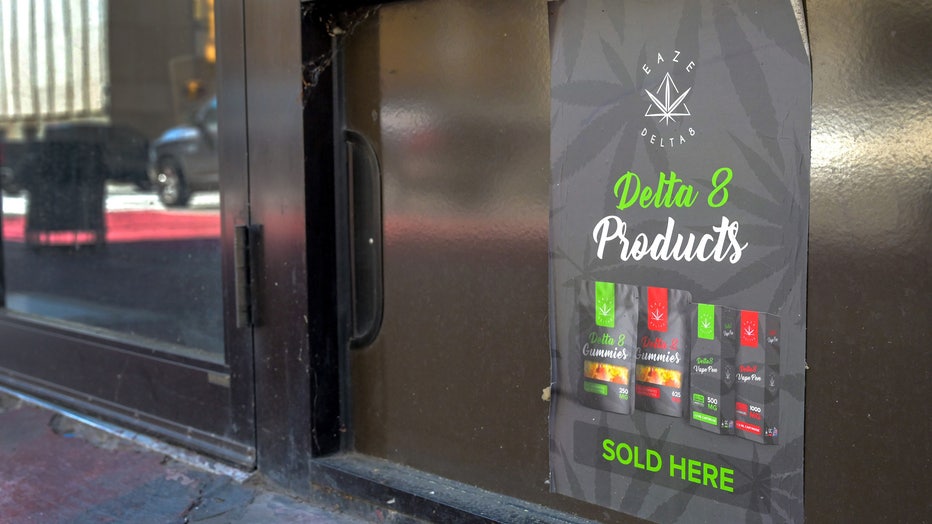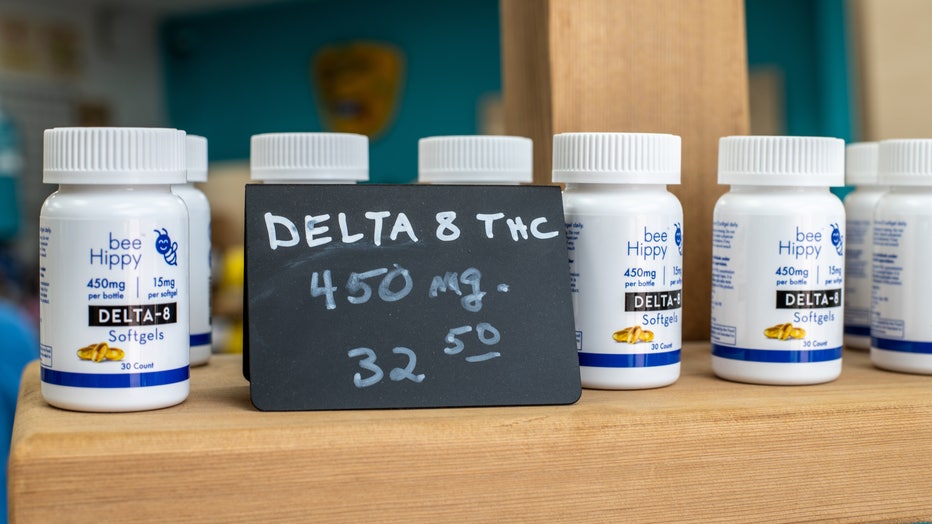Teen use of delta-8, an unregulated marijuana alternative, is rising
The use of delta-8, an unregulated and often synthetic form of hemp-derived THC, is on the rise among teens. It’s a concerning trend for health professionals who say cannabis use has a slew of negative impacts on adolescent brains.
According to a recent survey analysis from the National Institutes of Health, about 11% of 12th-grade students reported using delta-8 THC products in the past year – "that’s at least one or two students in every average-sized high school class who may be using delta-8."
"We don’t know enough about these drugs, but we see that they are already extremely accessible to teens," said Dr. Nora Volkow, director of the National Institute on Drug Abuse. "Cannabis use in general has been associated with negative impacts on the adolescent brain, so we must pay attention to the kinds of cannabis products teens are using, [and] educate young people about potential risks."
RELATED: Frequent marijuana use linked to increase in heart attack and stroke risk
Dangers of delta-8

Delta-8, which contains tetrahydrocannabinol, which the FDA says has not been evaluated or approved for safe use and may be marketed in ways that put the public health at risk, is sold in stores like this one in downtown Baltimore on May 12, 2022. (K
Delta-8 and other similar THC-type products sold over the counter in gas stations and smoke shops are not regulated by the U.S. Food and Drug Administration and have not been evaluated for safety.
A 2021 review of 51 delta-8-type products done by CBDoracle found that 76% had levels of THC – the psychoactive component in cannabis plants – beyond the legally permitted 0.3%, and that most companies selling these products either do not analyze their products or, if they do, "report only the potency of the desired cannabinoids, and not pesticides, heavy metals, excipients, or reaction side products."
The FDA received 104 reports of adverse events in people who consumed delta-8 THC products between December 1, 2020, and February 28, 2022. Of these 104 reports, 8% involved people younger than 18 years old, and 55% required medical intervention or hospital admission.
RELATED: FDA recommends moving marijuana to lower-risk drug class: Key takeaways
Adverse symptoms included hallucinations, vomiting, tremors, anxiety, dizziness, confusion and loss of consciousness, among others.
National poison control centers received 2,362 exposure cases of delta-8 THC products between January 2021, and February 2022. Of the 2,362 exposure cases, 41% involved people younger than 18, and 70% required some sort of medical evaluation or intervention. One minor died, according to the FDA.
There are several studies that point to adverse effects of cannabis use in teens, the NIH says. These include problems with learning, memory, and attention; changes in brain development; and the development of cannabis use disorder and other psychiatric disorders, such as depression, psychosis and suicidality.
The NIH says there are no existing medications to treat cannabis use disorder, and current treatments are primarily through psychosocial interventions, such as cognitive behavioral therapy.
"More research is needed to understand how delta-8, specifically, impacts these and other health outcomes," the NIH says.
How delta-8 and similar products became legal
In 2018, the U.S. passed the Farm Bill to legalize hemp and products derived from hemp, the low-THC version of the cannabis plant. This led to an explosion in CBD and other hemp-based products hitting the market, but cannabis industry insiders say it also inadvertently legalized synthetic cannabinoids – which are not at all like the plant.

DELTA 8 supplements on a shelf inside Hippy Bee Dispensary on Saturday, July 22 2023 in Garland, TX. (Sergio Flores for The Washington Post via Getty Images)
Delta-8 is one of more than 100 cannabinoids produced naturally by the cannabis plant, but there’s not a significant amount of delta-8 THC in cannabis plants. That’s why most concentrated amounts of delta-8 THC are typically manufactured from synthetically produced, hemp-derived cannabidiol (CBD).
"What we know from the research is synthetic cannabinoids are not plant cannabis," explained Rebecca Abraham, a former critical care nurse and founder of Acute on Chronic, a startup that helps patients navigate marijuana as a form of alternative medicine.
RELATED: Michigan dog attacks, nearly kills owner after being fed THC gummy
"They behave very, very differently, and synthetic cannabinoids cause a lot more problems in humans. They haven't been studied. And over here we do not recommend synthetics at all."
According to the NIH, synthetic cannabinoids have been known to cause acute pulmonary injury, psychiatric crises, seizures and renal damage. Reports of cannabinoid hyperemesis syndrome – or severe vomiting and other gastrointestinal issues tied to long-term cannabis use – are also on the rise in synthetic cannabinoids, the NIH says.
"It's synthetic, and we know this is not the same, and this is probably not good for you," Abraham said. "So when people are coming to the ERs, we know that physicians aren't asking, where did you get this cannabis? Was it from a neighbor? Did you buy this through the regulatory pathway?"
Which states have the highest teen delta-8 use?
Several students treated for possible 'cannabis overdose' at California middle school
Ten students were treated for a possible overdose at a middle school in the San Fernando Valley, according to investigators. FOX 11 LA's Gigi Graciette spoke live from the scene with LiveNOW from FOX's Josh Breslow.
Delta-8 use was higher among teens in states and regions where cannabis is not legal, and also in states that don’t have laws on the books to regulate delta-8, according to the NIH. About 14% of 12th-graders in the South and 15% in the Midwest reported delta-8 use. Those numbers dropped to 10% for the Northeast and 5% in the West.
In states without delta-8 regulations, 14% of 12th-graders reported using it. That number dropped to 6% in states with delta-8 legislation.
Because the survey is taken in school settings, students who were absent, not enrolled, or with less engagement in school – a known risk factor for drug use – may have been less likely to participate in the survey, the investigators note in the 2023 Monitoring the Future Survey. That means the number of students using delta-8 may be higher than reported.

